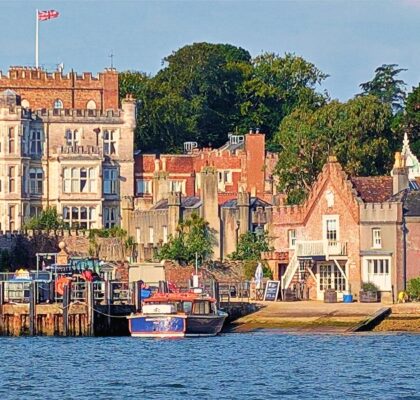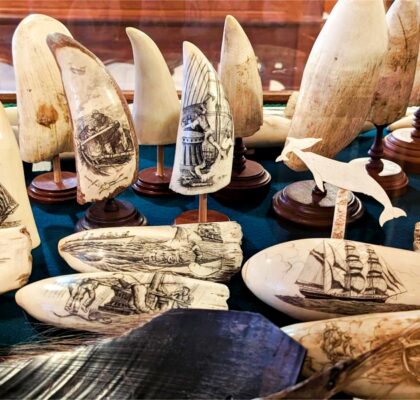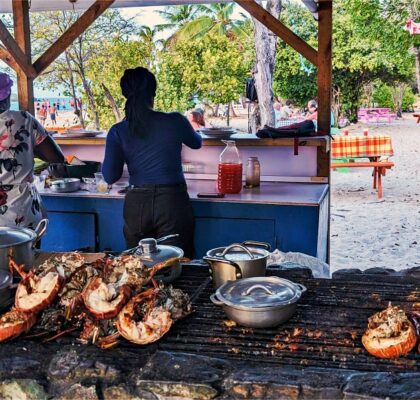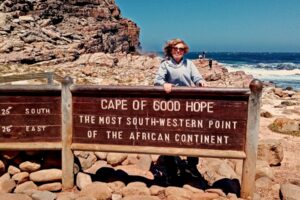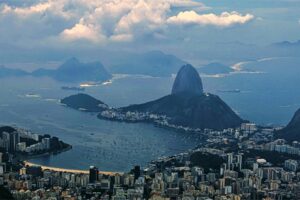
We had long wished to visit Namibia, with its vast deserts, the highest sand dunes in the world, canyons, the skeleton coast, prehistoric sites, rock engravings and game reserves. Namibia, at the time called South West Africa, became a German colony in 1884 which was deposed by SA troops during WWI. It became Namibia in 1968. Therefore many names are in German and this language is often spoken. Many buildings are colonial-era and there are festivals like Windhoek’s Oktoberfest.
Our 8 day tour was amazing. From the capital Windhoek we were driven SW to Sesriem, a small settlement in the Namib desert. Here we lodged in individual huts and ate outside overlooking the desert. At 06.00 am the next morning we entered the park. We were in Sossusviel, a large ephemeral pan set amid red sand dunes that tower up to 325m above the valley floor. Deadviel is a white clay pan with centuries- old petrified trees sprouting from it bordered by desert dunes including Dune 45 worth climbing for its viewpoint. We were alone walking in Sesriem’s deep canyon carved by the Tsauchab River. After lunch in the tiny settlement of Solitaire where a yellow mongoose checked out André’s feet, we stopped at the Tropic of Capricorn. Our next stop was Swakopmund sandwiched between Atlantic rollers and the Namib Desert. German architecture is prominent here with a baroque-style old Germany school, Evangelical Lutheran church, gabled, half-timbered buildings and road names in Gothic. We even had people ask us directions in German! The seafood was delicious. We took a living desert tour in a 4×4 for several hours and saw transparent namib dune geckos, eleodes (beetles), lizards,chameleons, sidewinder snakes and a Peringuey sidewinding adder. Our guide was passionate and patiently found some of the above often buried in the sand.
We headed to the Skeleton coast, thus named due to the numerous shipwrecks caused by fog and rocky and sandy coastal shallows on this treacherous coast. After stopping to see a shipwreck we arrived in the Unesco world heritage site Twyfelfontein (Doubtful Spring). There are extensive rock-art galleries with over 2500 engravings mostly dating back 6000 years. Our hotel was set in red rock mountains with engravings throughout the grounds. It was a spectacular setting. Driving along a nearby river bed we were surprised to see so many elephants and zebras.
Our last 3 days were spent in the vast Etosha National Park covering over 20,000 sq kms, with its big pan; an immense, flat, saline desert,. In the Park you just stop by one of the many waterholes and wait for animals to come to drink. On each of our tours of the Park we saw and were often very near an incredible number of animals: elephants, impalas (medium-sized antelopes), wildebeest, zebras, springbok, flamingos, giraffes, lions including a few digesting under a tree. In the hotel grounds we bumped into various animals like impalas!
The long drive back to Windhoek gave us an opportunity to discuss the economy with our driver. Namibia has a lot of mineral deposits like gold, copper, zinc and is the world’s largest producer of uranium and diamonds. However crippling droughts have cause widespread hardship to many. The Chinese have invested heavily in the country and are responsible for many constructions. We saw their influence, for example virtually all white goods are Chinese. Tourism is of course extremely important being responsible for about 1 in every 5 jobs.
We thoroughly enjoyed Namibia and saw stunning and varied landscapes, incredible wildlife, interesting towns and yet we know that there is so much more we could have seen, but time…..
